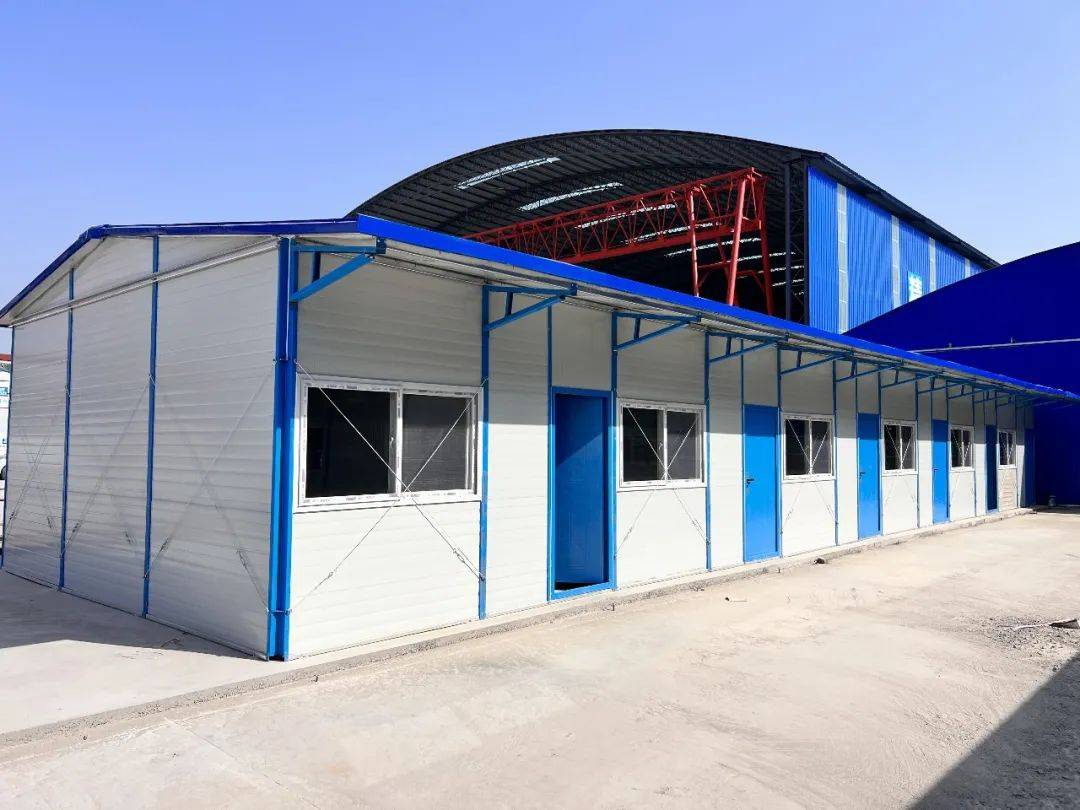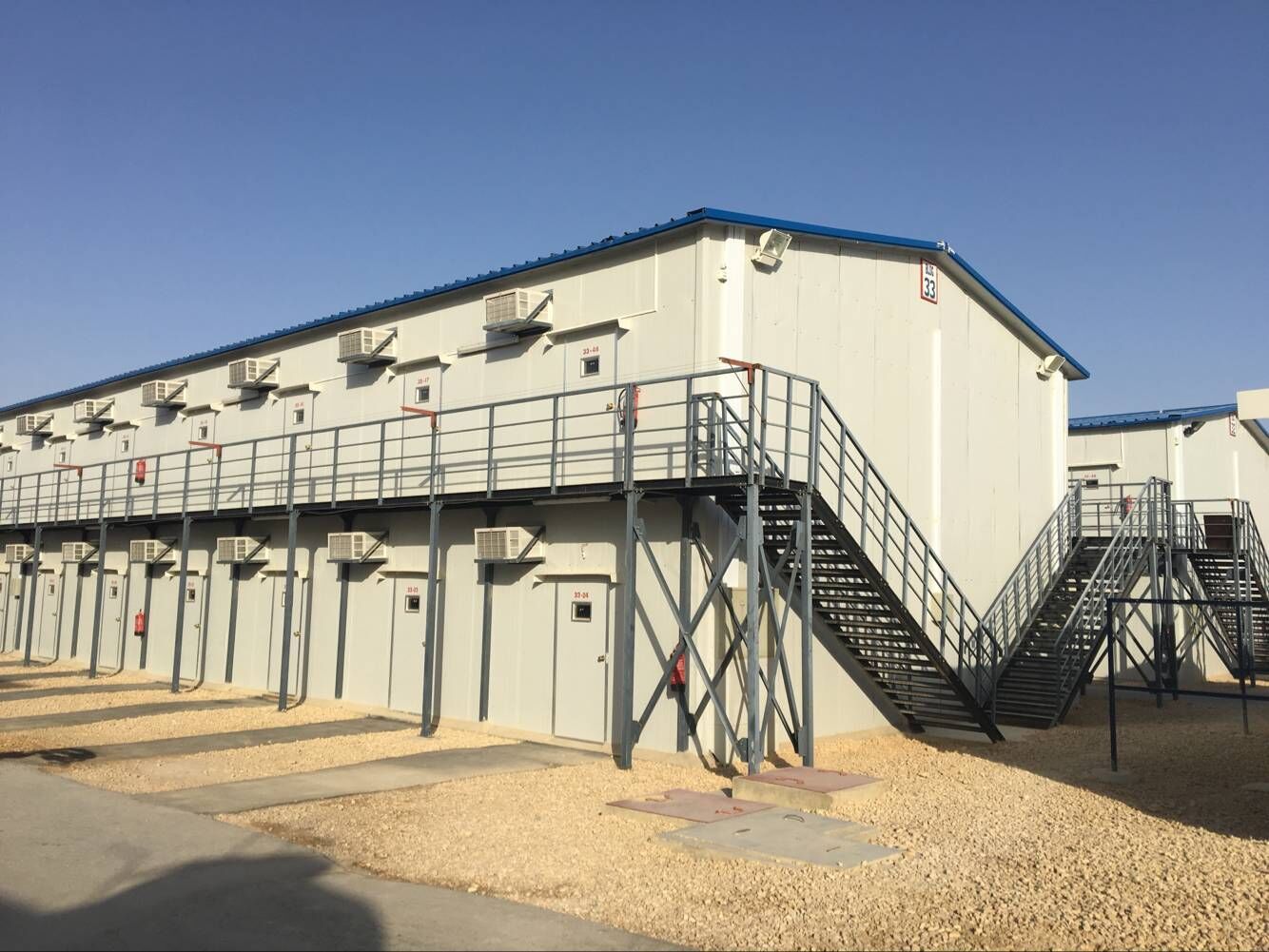Tel: 0086-532-88966982
0086-532-88965892
Website: www.lidajituan.com
E-mail: sales@lidajituan.com
Head office: 5th Floor, Building A, Dalen Center, 180 Haier Road, Qingdao, 266000, China
2025's Smarter Constructions: Sustainable Prefab Houses for Mining & O&G by China's Lida Group
Classification:Industry News
Release time:2025-07-07 09:00
2025's Smarter Constructions: Sustainable Prefab Houses for Mining & O&G by China's Lida Group
The global mining and oil & gas sectors face an unforgiving paradox in 2025: meet escalating demand for critical minerals and energy while drastically reducing environmental footprints. Traditional site constructions, with their sprawling carbon emissions, massive material waste, and extensive land disruption, are increasingly incompatible with investor expectations and stringent ESG mandates. Enter a transformative solution born not from compromise, but from innovation: Lida Group's sustainable prefab house systems, engineered specifically to reconcile industrial scale with ecological responsibility.
The Unsustainable Burden of Traditional Mining & O&G Constructions
Resource projects operate under an ESG Triple Constraint:
Carbon Catastrophe: On-site building is inherently carbon-intensive:
- Embodied Carbon: Thousands of truckloads transporting fragmented materials to remote sites. High wastage rates (often 20-30%) mean much of this carbon is literally thrown away.
- Operational Carbon: Poorly insulated, leaky structures demand enormous heating/cooling energy, especially in Arctic or desert extremes. Diesel generators run constantly.
- Construction Emissions: Extended timelines mean months of vehicle movements, heavy equipment idling, and temporary power generation.
Waste Avalanche: Remote sites struggle with disposal. Demolition waste at project end often becomes permanent pollution.
Ecological Footprint: Land clearing for construction staging, soil erosion, and disruption to local water tables carry long-term ecological damage.
Social License to Operate: Communities and regulators demand tangible proof of reduced environmental harm. Legacy construction methods fail this test.
Standard prefab homes or basic modular house kits offer marginal improvements. True sustainability requires fundamentally rethinking design, materials, logistics, and lifecycle management at an industrial scale. This is Lida Group's domain.

Lida Group’s Sustainable Prefab Blueprint: Engineering a Greener Footprint
As a pioneering China supplier since 1993, Lida Group has evolved beyond mere steel structure building manufacturer. Their sustainable prefabricated building philosophy integrates ecology into every project phase:
1. Slashing Embodied Carbon at Source:
- Radical Material Efficiency: Factory-controlled, CNC precision fabrication cuts material waste to under 5% vs. 25-30% on traditional sites. Less material consumed = less carbon extracted and transported.
- Logistics Transformation: Designing modular house units for maximum container/trailer fill reduces transport volume by 40-60%. Fewer shipments mean dramatically lower fuel consumption and emissions. Efficient modules minimize road/trail widening damage.
- Low-Carbon Material Sourcing: Strategic integration of recycled steel content (>50% in structural members), sustainably certified timber for non-critical elements, and exploration of low-carbon concrete alternatives for foundations. Actively researching green steel adoption.
2. Fortifying Operational Efficiency (Driving Down Scope 1 & 2):
- Thermal Fortress Engineering: Advanced composite SIP panels with aerogel-enhanced cores achieve U-values below 0.15 W/m²K. Triple-glazed, low-E, argon-filled windows and factory-sealed airtight construction (<1 ACH @50Pa) trap conditioned air. Reduce HVAC energy demand by 40-60% in extreme climates (Arctic/desert).
- Renewable Integration by Design: Roof structures pre-engineered for seamless solar PV installation (post-2023 projects feature pre-installed mounts/conduits). Modules designed for integration with wind micro-turbines and battery storage systems, enabling significant diesel displacement.
- Smart Building Systems: Pre-installed IoT infrastructure enables intelligent energy management – automated lighting/HVAC based on occupancy, real-time monitoring optimizing system performance. Data drives further efficiency gains.
3. Designing for Zero Waste & Circularity:
- Design for Disassembly (DfD): Bolted steel structure building frameworks (not welded), modular connection systems, and standardized components enable full disassembly. End-of-project relocation becomes efficient, transforming worker camps from disposal liabilities into redeployable assets.
- Material Passports: Digitally tagging major components facilitates future reuse/recycling, maximizing resource value beyond a single project lifecycle.
- Water Integration: Modules designed for low-flow fixtures and easy connection to rainwater harvesting systems/greywater treatment units dramatically reducing freshwater consumption.
4. Minimizing Site Disturbance & Biodiversity Impact:
- Compact Footprint: Factory precision enables denser, optimized camp layouts. Dramatically less land clearing needed vs. traditional sprawling construction staging areas.
- "Leave No Trace" Foundations: Preference for screw pile foundations, gravel pads, or innovative geocellular systems minimizes excavation, soil disturbance, and preserves natural drainage patterns. Easily removed, leaving minimal impact.
- Off-Site Fabrication Shield: The factory acts as a containment barrier, preventing construction debris (dust, chemical spills, microplastics) from contaminating pristine remote ecosystems.

Case Study: Copperbelt Carbon-Cut: Lida Powers a Zambian Mine Green
Project: Major copper mine expansion requiring 300-person accommodation & support buildings.
Challenge: Reduce project carbon footprint by 30% against baseline; achieve LEED v4 Silver equivalency; minimize site disturbance in ecologically sensitive area.
Lida Group’s Sustainable Prefab Solution:
- Material & Logistics: 52% recycled steel in frames. Optimized shipping reduced container count by 48%. Near-zero waste factory manufacturing.
- Energy Design: Arctic-grade insulated panels (U=0.18 W/m²K), integrated PV-ready roof structure (phase 2), smart occupancy-based HVAC control.
- Water & Site: Rainwater harvesting tanks integrated into module design. Screw pile foundations eliminated bulk excavation. Native vegetation restoration post-install.
- Results:
- Embodied Carbon Reduction: 38% vs. traditional build scenario.
- Operational Energy Reduction: Estimated 58% lower HVAC demand.
- Site Disturbance: Reduced cleared area by 65%.
- Waste: <3% construction waste to landfill.
- Achieved LEED v4 Silver criteria.
Why Lida Group? Beyond "China Supplier" to Sustainable Systems Partner
Delivering genuine sustainability requires integrated capabilities, not piecemeal components:
- Full Lifecycle Expertise: Designs consider fabrication, transport, installation, operation, and end-of-life – quantifying carbon and ecological impact holistically.
- Performance Guarantees: Transparent energy modeling and lifecycle assessment (LCA) reports provided, validating sustainability claims quantitatively.
- Compliance Navigator: Expertise integrating international green building standards (LEED, BREEAM, Green Star) into industrial prefabricated house solutions for seamless ESG reporting.
- Vertical Advantage: Control over design, advanced materials sourcing, and high-volume manufacturing enables cost-effective implementation of sustainable technologies at scale.
- Technology Integration Hub: Actively partners with renewable energy providers and smart building tech firms, creating bespoke integrated solutions.
2025 & Beyond: The Smart Sustainable Mine/Camp Ecosystem
Lida Group is pioneering the next frontier:
- Net-Zero Operational Camps: Combining ultra-efficient building envelopes, integrated renewables (PV/wind/hydrogen-ready), advanced battery storage, and AI-driven energy optimization for true fossil-fuel independence.
- AI-Driven Optimization: Leveraging operational data (energy/water usage, occupancy) continuously via embedded IoT to refine algorithms and push efficiency higher.
- Circular Materials Acceleration: Scaling the use of recycled composites, exploring bio-based insulation alternatives, and developing proprietary low-carbon steel alloys.
- Biodiversity Net Gain: Integrating native plant systems into foundations and water management, aiming for a regenerative footprint beyond just "less bad."
- Carbon Capture Readiness: Designing structural elements to support future integration of modular carbon capture units for high-emission process areas.
Conclusion: Building the Responsible Resource Future is Non-Negotiable
2025 marks the point where mining and oil & gas operations can no longer externalize their environmental costs. Stakeholders demand infrastructure built smarter, cleaner, and lighter on the planet. Generic prefab homes lack the industrial muscle and sustainability rigor. Traditional construction is economically and ecologically untenable.
Lida Group provides the engineered alternative: Industrial-Grade Sustainable Prefab Buildings. By masterfully integrating radical material efficiency, ultra-low operational energy consumption, closed-loop design principles, and minimal site disturbance into robust modular house and steel structure building systems, Lida offers resource companies a pathway to genuine ESG leadership. Their solutions prove that large-scale constructions can achieve substantial carbon reductions, conserve resources, and protect ecosystems without sacrificing performance, durability, or speed.
For projects where securing the social license to operate is as critical as extracting the resource itself, Lida Group, the innovative China supplier, delivers more than structures; they deliver a demonstrably sustainable foundation for 2025's responsible resource industry. Building smarter isn’t just possible—with Lida, it’s the new benchmark for operations at the edge.
prefab building,constructions,prefab house,oil and gas
Contact Us
Head Office: 5th Floor,Building A,Darron Center,No.180,Haier Road,Qingdao, 266000,China
Tel: 0086-532-88966982 88965892 Fax:0086-532-88965571
WhatsApp:+86 13793209022
Mobile/Wechat:+86-15166671720
Email: sales@lidajituan.com Website: www.lidajituan.com
Alternate Website: www.lidamodularhouse.com
Head Office: 5th Floor,Building A,Darron Center,No.180,Haier
Road,Qingdao, 266000,China
Tel: 0086-532-88966982 88965892
Fax:0086-532-88965571
Email: sales@lidajituan.com
Website: www.lidajituan.com
Alternate Websit: www.prefabhousecn.com
Wechat/WhatsApp:+86-13793209022
Copyright(c)2023 All Rights Reserved SEO Business license

